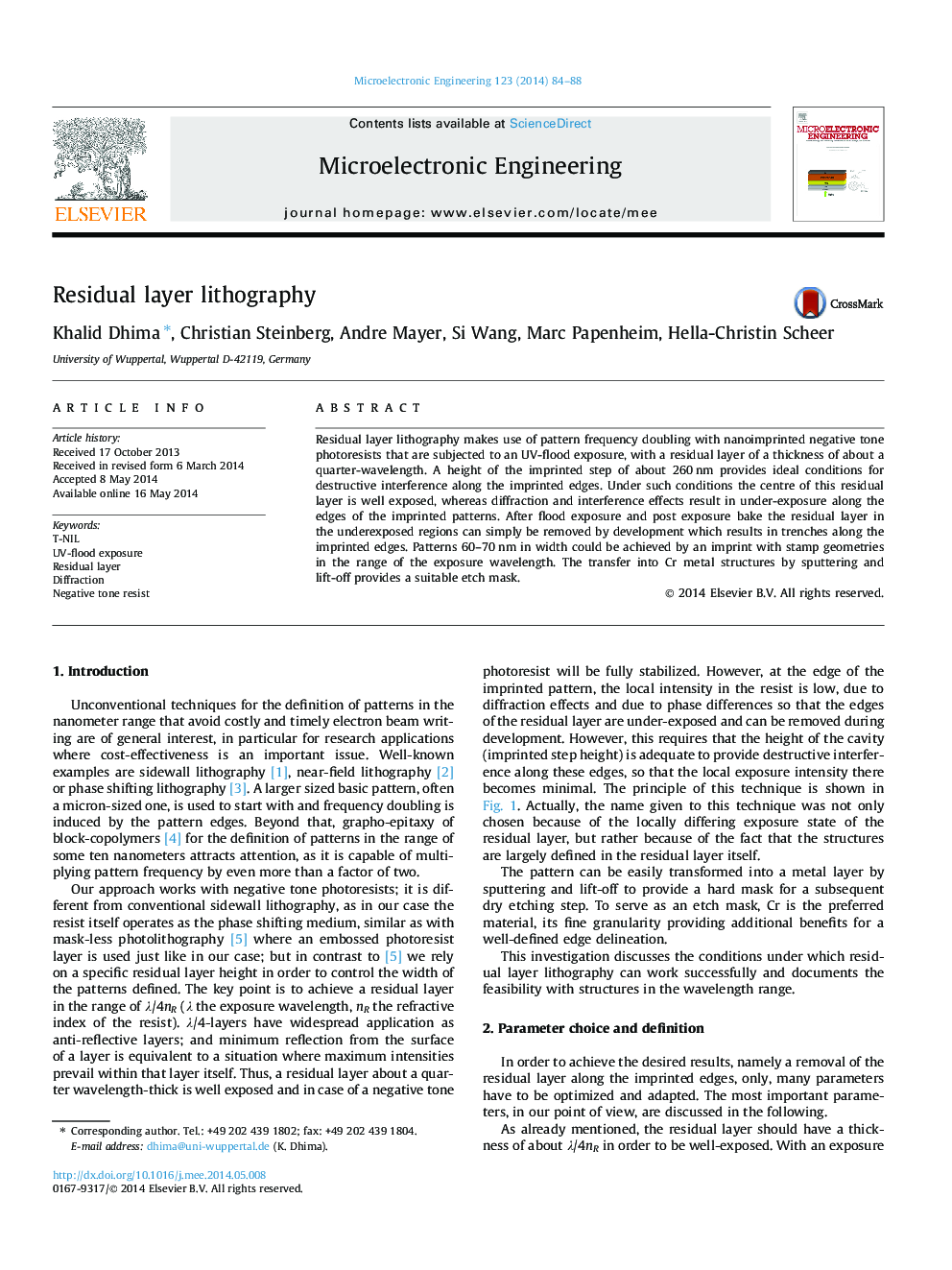| کد مقاله | کد نشریه | سال انتشار | مقاله انگلیسی | نسخه تمام متن |
|---|---|---|---|---|
| 539401 | 1450358 | 2014 | 5 صفحه PDF | دانلود رایگان |
• Combination of nanoimprint lithography of negative tone resist with a UV-flood exposure.
• Pattern definition in the remaining residual layer.
• Use of interference and diffraction effects along the imprinted edges to define structures in 50 nm range.
Residual layer lithography makes use of pattern frequency doubling with nanoimprinted negative tone photoresists that are subjected to an UV-flood exposure, with a residual layer of a thickness of about a quarter-wavelength. A height of the imprinted step of about 260 nm provides ideal conditions for destructive interference along the imprinted edges. Under such conditions the centre of this residual layer is well exposed, whereas diffraction and interference effects result in under-exposure along the edges of the imprinted patterns. After flood exposure and post exposure bake the residual layer in the underexposed regions can simply be removed by development which results in trenches along the imprinted edges. Patterns 60–70 nm in width could be achieved by an imprint with stamp geometries in the range of the exposure wavelength. The transfer into Cr metal structures by sputtering and lift-off provides a suitable etch mask.
Figure optionsDownload as PowerPoint slide
Journal: Microelectronic Engineering - Volume 123, 1 July 2014, Pages 84–88
